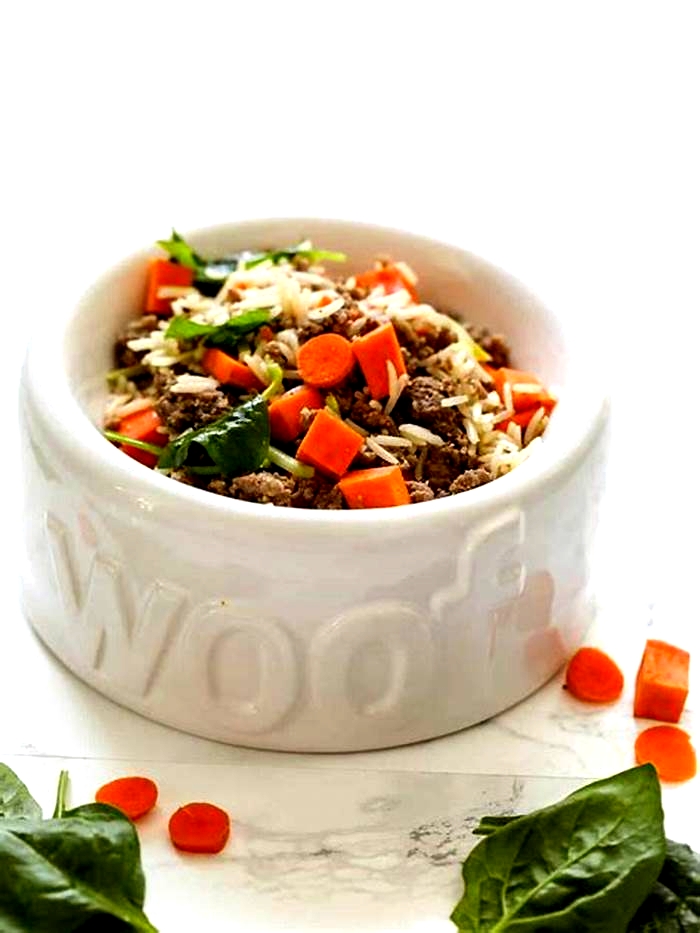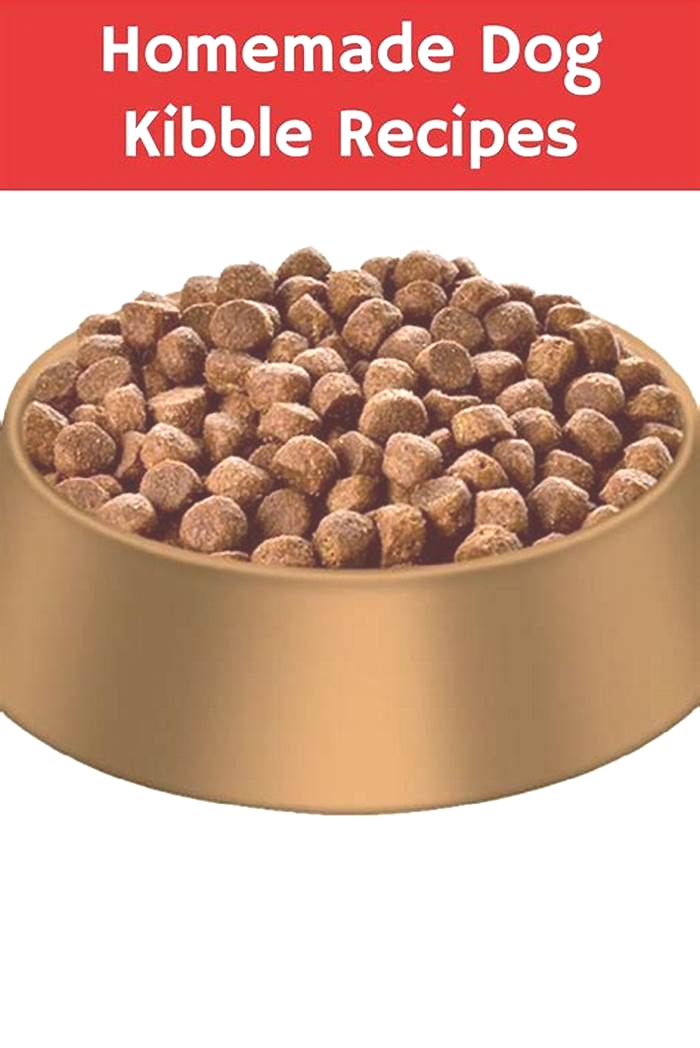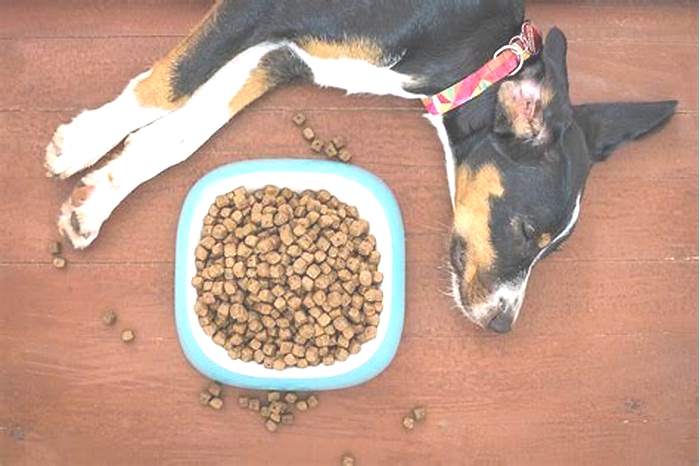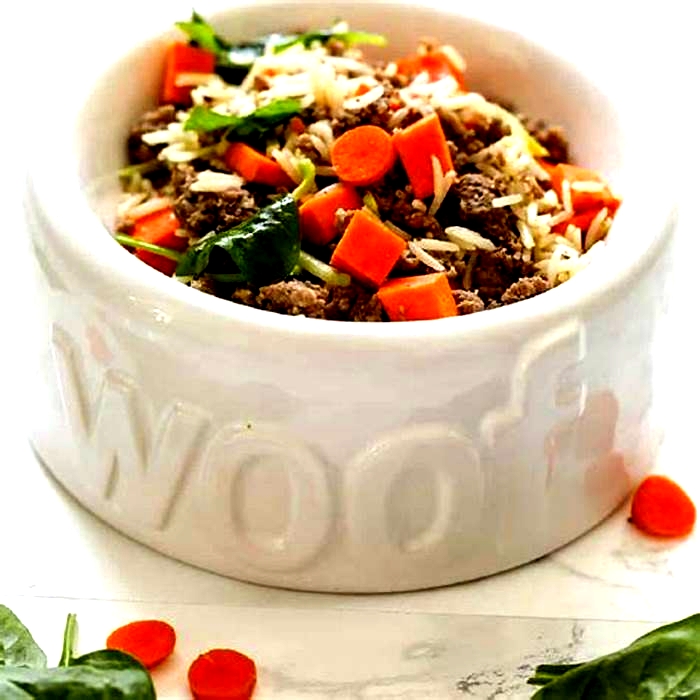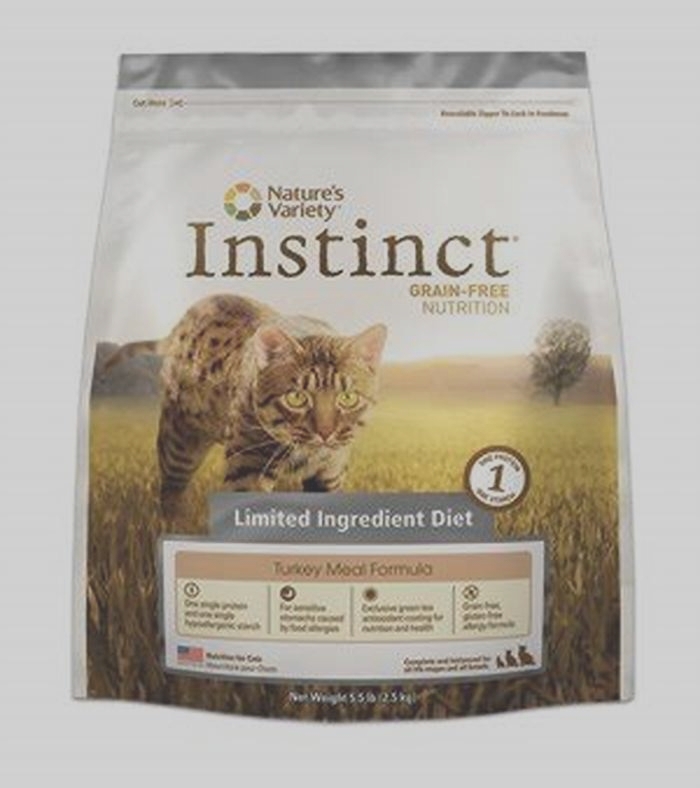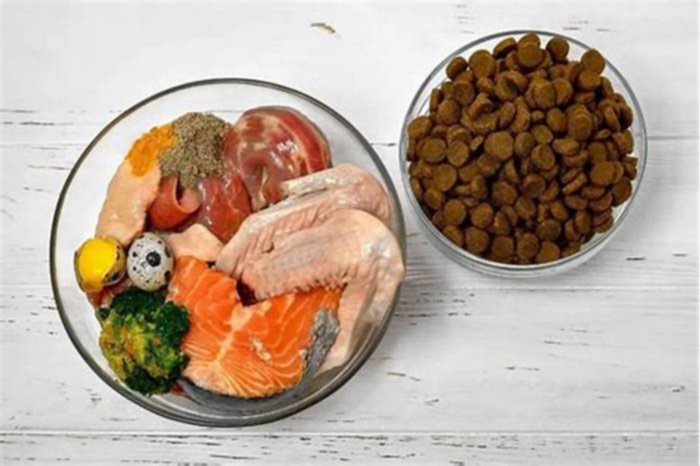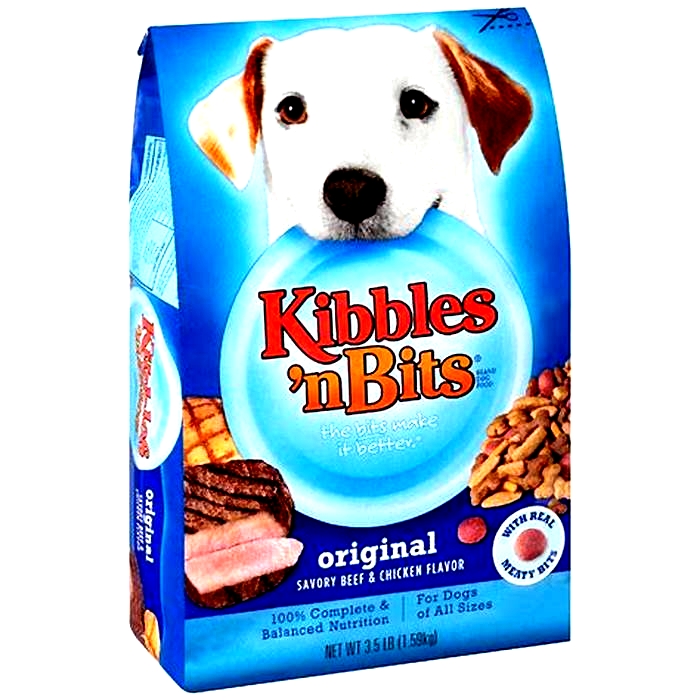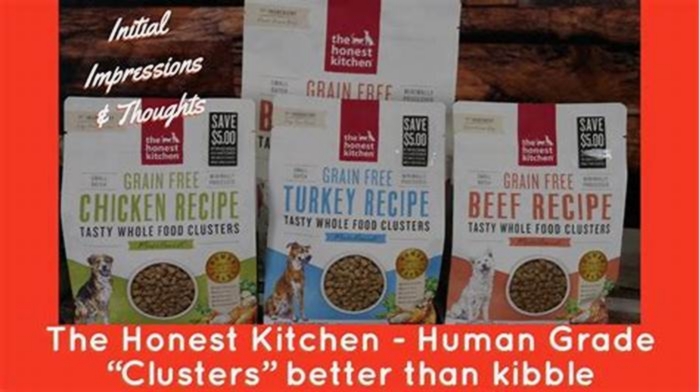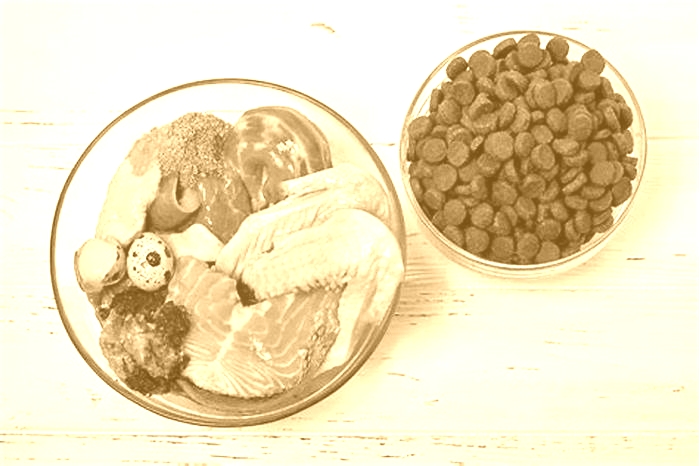homemade dog food mixed with kibble
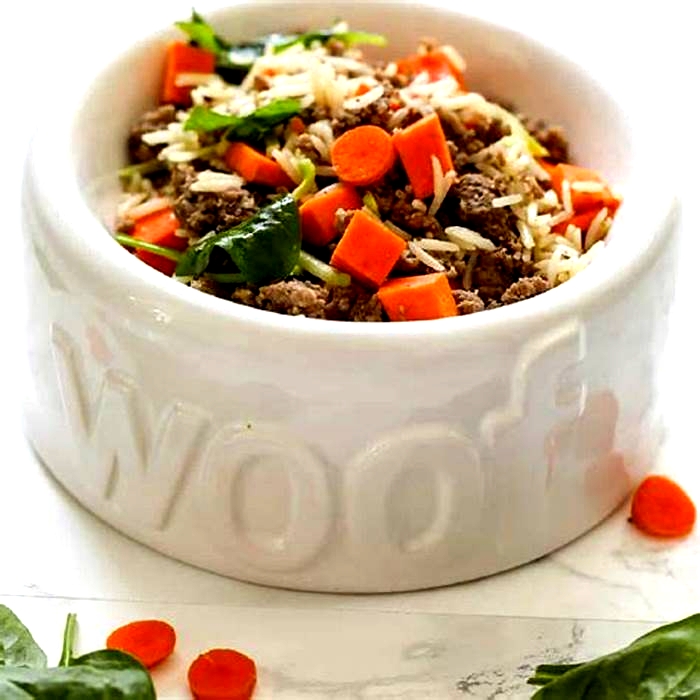
Can I Feed My Dog Homemade Food and Kibble?
Last updated on April 19th, 2023 at 06:17 pm
As loving dog owners, we think of our dogs as part of our family. So, naturally, we want to make sure that they are well cared for and receive wholesome, tasty meals. As a result, many people want to prepare homemade food for their furry pals just as they would for themselves.
However, in todays busy world, many of us do not have time to cook for ourselves let alone for our dogs! Yet, we may manage to cook limited amounts of food to add to their daily bowl of kibble. But is this a good idea?
The short answer is, yes! It is perfectly fine to combine homemade cooked food with kibble. Some will argue otherwise, but it is actually a myth that adding homemade food to kibble will stall or create digestive problems for your dog.
The key, however, is in how the food is prepared and the ratio of the combined food. Keep reading to find out more about how to combine food properly.
Guidelines for Combining Homemade Food and Kibble
Follow these basic guidelines for combining human food with kibble to ensure you are giving your pooch a canine-appropriate meal:
- Buy quality kibble
- Cook only human food that dogs can safely eat
- Store all food properly
- Create the right ratio of cooked food and kibble
Buy Quality Kibble
First of all, make sure you start with high-quality kibble dog food that follows AAFCO(American Association of Food Control Officials) guidelines for a balanced, age-appropriate diet. You should also check with your vet or reliable resources such as dogfoodadvisor.com to view ratings and whether or not the brand has had recalls. One of the biggest issues with dog food companies has been poor quality control and improper storage which can lead to dangerous mold toxicity.
Additionally, poor-quality brands do not use healthy sourced ingredients and may include rendered meat or byproducts from diseased animals. You should also check the label for dog food that has toxic preservatives such as BHA and BHT. Preservatives such as Sorbic Acid, however, are safe and are also used in human food. See this great article about safe and toxic food additives at mosaicfoods.com.
Feed Only Safe Foods
Not all human food is good for dogs. For example, onions and garlic can upset your dogs tummy and foods such as avocados and raisins can actually be toxic. Other foods, however, such as rice, sweet potatoes, and peas are highly recommended for a dogs diet.
There has been a lot of controversy over whether or not grains are good for dogs, but most vets recommend the inclusion of wholesome grains. Recent scientific research has pointed to cardiac issues in dogs who did not receive grains in their daily food. However, it may be wise to avoid wheat, corn, and GMO products due to allergies. Healthy grains such as oats, quinoa, and rice are good options. A good post about grains and designer diets can be found at VCAHospitals.com.
Be sure to see my post, Is it Ok to Feed Your Brand New Rescue Dog Dry Kibble? for more information about quality kibble and human food that dogs can and cannot eat. Also, do not season your dogs food with salt, pepper, or any type of spice. Plain food is best or you may upset your dogs stomach. Dogs are used to bland diets and are very sensitive to rich, spicy, or fatty foods.
Safe Food Storage
Store cooked food in tight containers in your refrigerator for no more than 3-4 days. You can also freeze portions of large batches. Keep the kibble in its original bag and place it inside an airtight container. See more about food storage in my post, How Long Does Dry Kibble Last? Even though it is dry, kibble can become rancid within 2-3 weeks once the bag is opened. So be sure to buy only the amount of food you will use in that period of time.
The Ratio of Homemade Food to Kibble
Unless you plan to cook fully balanced, vet-approved foods for your dog, then I suggest you keep the ratio of homemade food to kibble low. If you add food daily, then consider a 20/80 % ratio of homemade food to kibble. This will help ensure that your dog is getting a balanced meal with the appropriate nutrients. Be sure to see my post, When You Should Cook for Your Dog and When It is a Bad Idea! for more information about home-cooked meals.
The Myth that Mixing Homemade Food with Kibble Is Bad
Some people have claimed that kibble lowers the PH levels in a dogs stomach making it hard to digest homemade food. According to Alex Writz at houndgames.com, this is a myth and is not supported by science. In fact, scientific research suggests just the opposite. Another argument is that kibble takes longer to digest than raw or cooked meat. Again, studies demonstrated that was not accurate either and kibble was actually digested quicker. I have written a short eBook about how to add homemade food to your dogs kibble to help you figure it out!
Dogs are Not People!
Remember that what is good for us is not necessarily good for our canine friends. And, like us, dogs love junk food! But that doesnt mean that either one of us should eat it! Be sure to see my post, Is an Apple a Day Good for Your Dog?
Each time I take my dogs to the local park for their daily walk, one of them always walks in the street next to the sidewalk with her nose in the gutter. She has figured out this is a good place to find bits of fast food and candy bars that people drop as they get out of their parked cars. She is very fast, so I have to keep a close eye on her!
We may be tempted to give them a bite of our taco or fried chicken as they sit beside us, drooling. But we will cause havoc on their canine stomachs if we do. Therefore, do not feed your dog table scraps!
When I was growing up in Iowa, our family dog, Skipper, was frequently given leftover table scraps which he eagerly lapped up. But Skipper eventually turned into a fat little dog. I cant imagine that was good for his health and his strident running turned into a slower waddle as he grew older.
In an article by Tove Danvowich at Eater.com, he discusses how people frequently feed their dogs what they eat. He highlights Rich Woodfords recent book with this excerpt: The stuff that providesthe flavor were looking for isnt good for dogs, says Rick Woodford, author ofFeed Your Best Friend Better,possibly the most popular cookbook in the canine genre. If you have a tasty people recipe, its not so great for your dog. If you have tasty dog food, its not so good for people.
Best Practices
What to Cook
For dog owners who simply want to supplement their dogs kibble with some tasty homemade food, then I suggest you give them a small topper of unseasoned cooked chicken or beef. You can also add a little rice, green peas, or sweet potato which are all good foods for them and often included in commercial dog food. But keep it to a minimumjust enough to give them as a topper if you do this daily.
You can also give them an entire meal that is home-cooked in place of the kibble on special occasions as a nice treat. When I make a big pot of stew or a roasted chicken, I will cook a small separate batch for my dogs with no salt or other seasoning. I may add some carrots, peas, sweet potatoes, or green beans to a beef stew and serve them a large portion with just a small amount of kibble.
It just seems unfair to be cooking something on the stove all day that smells great without giving them some as well! And, It is good for them even if not fully balanced. I just make sure that it is bland and lean enough so they do not get an upset tummy.
For dogs, the smell of food is probably much more enticing than the actual taste. Dogs sense of smell is 100s times better than humans. Yet, their sense of taste is less as they have only about 1/12 of the tastebuds that humans have. If you watch dogs eat, you will notice that they dont really chew as much as they gulp and swallow big chunks of food. My dogs usually gobble up their dinner in less than 5 minutes.
Therefore it is more about the smell and less about the tasting! So, a little bit of delicious-smelling home-cooked food goes a long way as a topper or partial meal.
Raw Foods
You can give your dog a few raw vegetables as well. My dogs love to crunch on a small carrot for lunch, and it is good for them!
In general, I am not a raw dog food fan when it comes to meat or a totally raw diet. Raw diets require extremely careful handling due to bacteria, and I am not convinced that a 100% raw food diet is that good for a dogs digestive system. See my post, Thinking About a Raw Food Diet for Your Dog? Pros, Cons, and Warnings.
Final Thoughts
One of the hardest things for me is ignoring my dogs big brown eyes as they stare at each bite I take during my dinner. But I often have to remind myself that dogs are scavengers by nature. In the wild, canines spend a good part of each day searching for food to survive. Be sure to click here to get your free eBook about adding homemade food to your pups kibble!
So, it is not surprising that our furry family members almost always drool over our food and want more to eat, even if they are not hungry. Its just what dogs do!
Deanna Euritt is a dedicated dog enthusiast with over three decades of experience in raising and training a diverse range of dogs, including many rescue pups. Her practical expertise is rooted in real-life experiences, where she has successfully navigated the challenges of nurturing rescue dogs into confident, well-adjusted companions. Residing in Northern California, Deannas days are filled with adventures along trails and beaches with her beloved dogs, Charlotte and Georgia. In her writing, she offers insightful, compassionate advice to fellow dog lovers, leveraging her extensive personal journey in the world of dog care and training. See About Us.
Homemade Dog Food to Go With Kibble
i Jupiterimages/Photos.com/Getty Images
While most store-bought kibble is nutritious, some owners prefer to add their own twist to their dogs diet. Homemade food, in addition to your pups normal kibble, can add flavor and variety to his meals. As with any dietary change, check with your vet before beginning.
Homemade Food Basics
Adding to your dogs diet isnt an absolute necessity, but many owners feel good about giving their furry friends an extra treat with their meals. There is some dissension over whether dogs are carnivores or omnivores, but many authorities give fruits and veggies two thumbs up, in moderation. Lean meats, including beef, chicken, and turkey are acceptable, as are wild meats such as elk and deer. Vegetables such as broccoli and carrots are safe for your furry friend, as are small chunks of fruits including apples and bananas. You can add rice or pasta to your homemade food, as long as Fido is free of grain-based allergy issues.
Turkey and Rice
Add 1 teaspoon of olive oil to a big, hot frying pan, and add 1 pound of ground turkey to the pan. Cook the meat until it is brown and crispy, and sprinkle in one package of frozen mixed vegetables. Boil up a cup of rice in a separate pan, and add it to the turkey and vegetables once they warm together. Soak the turkey, veggies and rice in two cups of low-sodium chicken broth, cover and boil for 20 minutes, or until the rice cooks down and takes on the consistency of puppy pudding. Transfer to a storage container, and refrigerate between meals. At mealtime, add 3/4 of your dogs normal ration of kibble to his bowl, and substitute the remaining 1/4 with the poultry pudding. Drizzle in 2 tablespoons of hot water, stir thoroughly and let the mixture meld for 5 minutes before feeding your hungry pup.
Beef Stew
Dice 1 pound of stew meat into 1/2-inch cubes, and cook very low heat until brown and slightly crispy. Bathe the beef in 2 cups of low-sodium beef stock and 1 cup of water, and bring to a simmer. Simmer the beef for 20 minutes, and liven up the mix with one can of unsalted green beans and 1 cup of frozen carrots. Crank the heat to medium and boil for 20 minutes. Whisk up 1 tablespoon corn starch and 2 tablespoons water in a small bowl, and stir into the beef stew. Boil for another 5 minutes to transform the watery mixture into a thick, bubbling beef stew. This stew adds plenty of flavor and gravy to the kibble, and is a perfect addition for picky pups.

